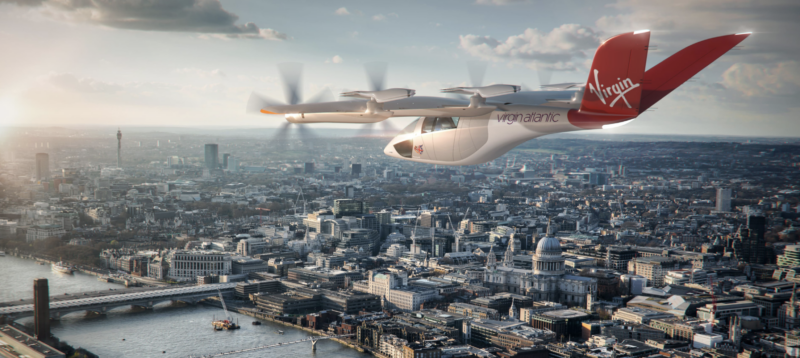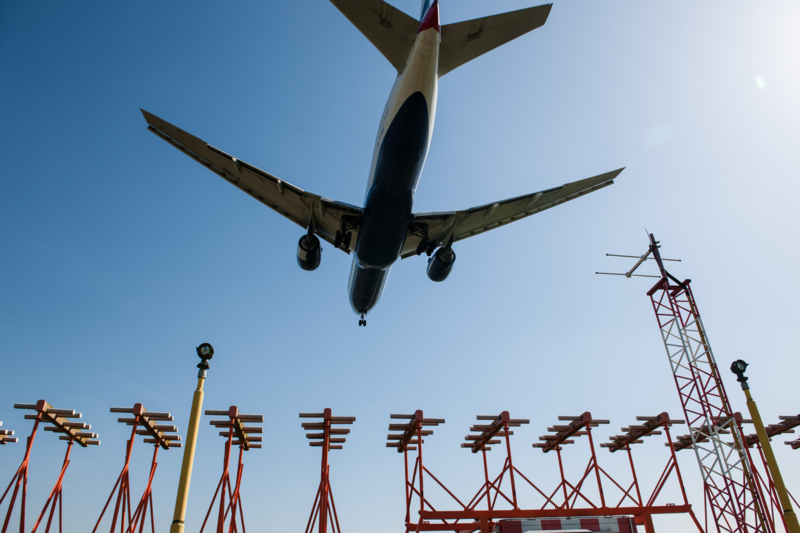Answering your questions on Air Taxis and Urban Air Mobility
27 September 2022In August’s episode of Altitude, we had a fascinating discussion with Vertical Aerospace’s Richard Haupt about the future of Urban Air Mobility and eVTOL ‘flying taxis’. A huge amount of work has gone into this part of the industry in recent years, and while there are still hurdles to overcome it is much closer to becoming a reality than some people may realise.
I had a great time discussing the topic with my colleague Tharaka and Richard. You can watch the whole episode back on demand, or as a podcast available in all the usual places. We also had some very astute questions from the audience, many of which we just didn’t have the time to get to during the live show. So, with that in mind, Tharaka and I wanted to address a few more here.
This is a fast moving and dynamic part of our industry that is constantly evolving, so we’ve done our best to be as open and honest as possible based on what we know today and what we think tomorrow might look like.
How will low visibility conditions be dealt with?
Conventional crewed aviation is primarily dependent either upon Air Traffic Management (ATM) services, or a pilot’s ability to see and avoid other aircraft. Air taxis will perform very differently from conventional aviation, thus the challenge is to reconcile these different ways of operating to enable all aircraft, crewed and uncrewed, to operate safely and efficiently in our skies.
Nevertheless, we expect eVTOLs to be piloted in the near term and be reliant on a mix of both ATM services and a pilot’s ability to see and avoid other aircraft. This combination would allow eVTOL pilots to manage low visibility conditions. Moreover, as technology and regulations evolve, we can expect operations in various meteorological conditions to be accommodated.

It’s hard to not be sceptical when it comes to the integration question. The privatised UK ATC system already struggles to integrate General Aviation with commercial traffic. In particular, the number of refusals for GA to cross into controlled airspace is massive. When it comes to many more vehicles flying, won’t this situation just worsen?
We had quite a few questions posed by members of the General Aviation community regarding access to airspace and whether the introduction of new airspace users could impact that. We are working with partners across the industry to identify the best and most equitable use of airspace for all users without disrupting any existing ones. Part of that will come down to the airspace design principles that are agreed, a process that we’d absolutely expect the GA community to have a say in. I know the CAA is engaging the GA community on policy development, precisely to that end.
Would be interested to hear about the routes of these potential future operations in cities and the associated risks? Would low flying and higher concentrations mean higher risk?
Again, I think this comes down to our airspace design principles that will be written to mitigate risk wherever possible. We will also follow the principle of providing fair and equal access to airspace in order to ‘Share the Air’. eVTOL vehicles may require use of existing or new routes due to operational and customer requirements.
Fundamental preparatory work is going on at the moment to understand and mitigate the potential risks of eVTOL operations. That includes looking at operating in a range of weather conditions, flying within a high density obstacle environment and in close proximity to other aircraft operations. The goal is always safety and to minimise the operational impact on communities on the ground.
How do you see the future of traditional aviation when UAM will be fully developed?
Fundamentally, I think eVTOL ‘air taxis’ will fulfil a different need from conventional aviation. I don’t see it as a zero-sum game. In fact, my hope is that by making it easier and quicker for people to travel to and from airports, it may actually help support traditional aviation. Similarly, electric engines that are being pioneered by companies like Vertical Aerospace are sure to play a role in the longer-term decarbonisation of aviation more broadly.

What global efforts is NATS looking at to make sure that ATM/UAM operations are to certain extent harmonious? As much as this might be a domestic effort, global influence and synergy is also key.
NATS is a member of several existing international groups – like CANSO and ICAO – where many of the members are grappling with the same exciting challenges as we are. It’s a good opportunity to share what we’re learning and to hear the experiences of other organisations. At a more local level, the projects that we’re involved in as part of the Future Flight Challenge are made up of truly cross-industry consortia. For example, in the Advanced Air Mobility (AAM) world, the Air Mobility Ecosystem Consortium (AMEC), which will demonstrate the commercial and operational viability of AAM in UK, is made up of 16 partners, including NATS and Vertical Aerospace. In the BVLOS (Beyond Visual Line of Sight) area, the CAELUS project, which is looking at how drones can be used to deliver medical supplies in Scotland, is made up of 16 partners including NATS, AGS Airports, University of Strathclyde and NHS Scotland.
How would the deployment of eVTOLs work with ANSPs? Will Urban Air Mobility be managed by ATM (like NATS)? If not – what will the interface look like?
The role of an airspace manager will remain critical in areas of busy airspace to ensure all aircraft are safely separated and able to enjoy the benefits of an integrated and modernised airspace. Where there is an existing airspace manager, which may or may not be NATS at an airport, there is a role for the existing ANSP to assume airspace management responsibility. In areas where there isn’t an existing airspace manager, some form of oversight would be needed, rather than active airspace management.
What is the current thinking on UAVs and electronic conspicuity?
Integrating, not segregating different types of aircraft will ensure our skies remain accessible to all types of airspace user and all types of operation. Electronic conspicuity, which ensures all types of aircraft will be seen and detected, is essential to achieving this integration. Increased situational awareness in the skies will be especially important when uncrewed aircraft have different flying characteristics from the crewed ones that they operate alongside – for example flying lower or higher, slower or faster – and no pilot on board to look out for other aircraft.
We hope answering these few extra questions has been useful. Don’t forget, you can watch the whole programme back on demand or listen to it as a podcast to get the full lowdown on what is a hugely exciting topic.
Every Altitude episode is also available on our website. Enjoy!
Comments
Please respect our commenting policy and guidelines when posting on this website.



